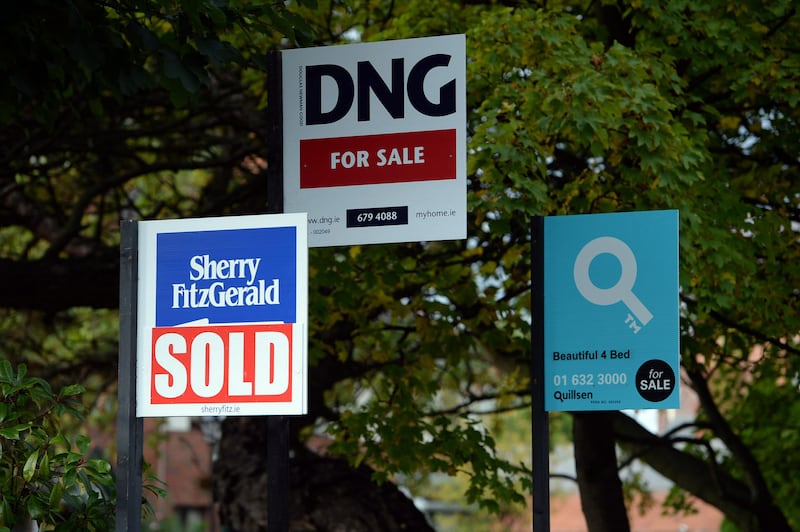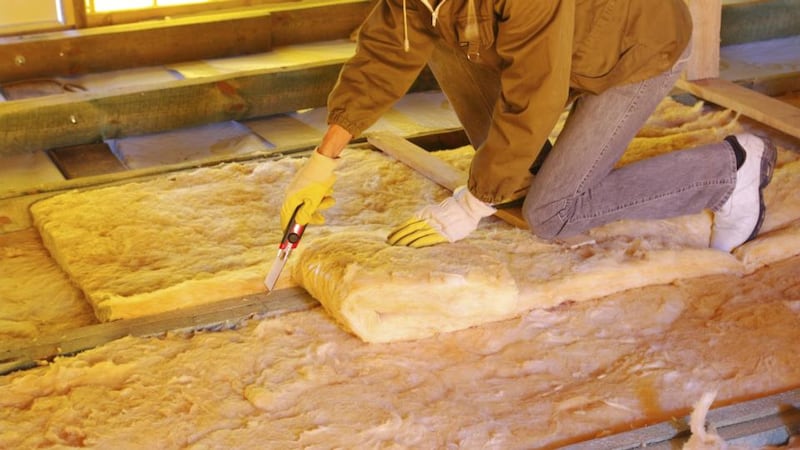From an empty house to a cold house to a new house, there are now plenty of Government-backed schemes offering a range of financial incentives to help you renovate, retrofit or buy your home.
But it’s worth reading the fine print before you take the cash, as many of them have clawback provisions if you don’t fulfil the requirements you sign up to.
Vacant housing scheme
Viewers of this season’s Dermot Bannon’s Room to Improve on RTÉ One will be familiar with the vacant housing scheme grant, which offers a payment of up to €70,000 to anyone prepared to turn a vacant property into a home or rental unit. And if the property is on an offshore island, you can get as much back as €84,000.
Administered by your local authority, Croí Cónaithe is aimed at revitalising housing stock across the State.
According to the Department of Housing, interest in the incentive has been keen, with more than 6,400 applications since it launched in July 2022. Of these, more than 3,500 have been approved. Given the time lag between approval and the refurbishment work being carried out, just 100 grants have actually been paid to date, so it’s too early to say how many will end up lapsing.
Of note is that Donegal had the highest number of applicants in the three months to December 2023, at 127 – more than Co Cork (90), Co Kerry (58), or Dublin city (72).
But if you don’t meet the requirements of the grant, you may find that you have to give some of the promised cash back. If you’re going to live in the property yourself, for instance, you must do so for at least five years – otherwise you will have to give back all of the grant. If you sell after having lived in the house for between five and 10 years, you will have to give 75 per cent back – €52,500 if you got the full €70,000.
No clawback applies if you’ve lived in or rented the property for more than 10 years.
And these amounts won’t change even if property prices do. “In the event of a fall in the value of the property, the full monetary amount, subject to the percentage clawback above, will still be repayable to the local authority.”
Since May of last year, it has been possible to avail of the grant for a property that you might want to rent out. If you opt for this arrangement, you must then rent out the property for at least 10 years.
But how will the local authority get its money back? It will put a legal charge on the property when you draw down the grant and that will remain in place for 10 years. Should you sell it within that time, the local authority will have a legal right to recoup its funds.
If you borrow to buy the vacant house, your mortgage will be the first charge on the property followed by the local authority’s charge. So if sold, the bank will first recoup its funds, then the local authority. You only get what is left after that.
According to a spokesman from Bank of Ireland, the bank will lend for properties that are approved under this scheme, but its lending approach will include “an assessment of the current condition of the property, the likely costs to bring it to a habitable standard and the funding in place to complete required improvements”.
Help to Buy
Aimed at first-time buyers, Help to Buy was established to make it easier for them to buy a new home as well as incentivising builders, which is why it applies only to newly built properties.
It offers a rebate of income tax and deposit interest retention tax (Dirt) the purchasers have paid over the previous four years. That rebate has since been expanded and you can now claim back up to €30,000 depending on your circumstances.
But did you know that Revenue might swoop in and look for this €30,000 if you don’t fulfil all the requirements of the scheme?
Clawback figures are low: since 2018, some 40,000 people have availed of the scheme and, of these, Revenue figures show that fewer than 800, or 2 per cent of successful applicants, have had the money clawed back at a total cost of about €6 million. Of these, 380 had their money clawed back by Revenue, while a further 360 claimants voluntarily cancelled their claim.
According to Revenue, to avoid a clawback of your tax rebate, you need to have been entitled to the payment in the first place – by being a first-time buyer of a newly built property – and you need to live in the home for at least five years.
“If you do not live in the home for five years, the amount you must repay depends on how long you have lived there,” Revenue says.

For example, if you lived in your new home for only three years, Revenue can look for 60 per cent the value of your grant back. If you got the full €30,000, this would work out as a bill for €18,000. If you only lived there for one year, you’d owe the full €30,000.
What if you’re a couple? Well, in such cases, if one member of the couple moves out, but the other stays, there will be no clawback.
And, if you need to relocate temporarily for work? According to Revenue, you can avoid a clawback in such instances, provided you do not buy another house in the new location. The kicker, however, is that you must still live in the property for five years. So, let’s say you move into the house in September 2020, and subsequently move abroad for nine months, you will then need to live in the house until June 2026 (ie an extra nine months) to avoid a clawback.
The rules also apply to those who build their own home. If you opt for this approach (and a huge number of those who avail of Help to Buy do), you must finish your home within two years of getting the grant. Revenue will, however, extend this time frame in limited circumstances.
And how would Revenue know, you might ask? Well, while it asks you to notify it, it has other ways too; if you start renting the property for example, Revenue will likely be aware of this and, if you sell it, Revenue will also know via stamp duty/property tax returns etc.
Energy grants
If you’re one of the many thousands of people who have applied, or drawn down energy grants from the Sustainable Energy Authority of Ireland (SEAI) – or hope to do so in the future – you should be aware that you may find that you have to give your money back.

According to the SEAI, if works are needed and haven’t been carried out to a required standard, it may claw back some or all of the grant it has paid out. If it does so, it will look for repayment within “one calendar month of the date of a letter from SEAI containing such demand”.
[ How to retrofit your home and slash your energy billsOpens in new window ]
First Home Scheme
The First Home Scheme is a little bit different, in that a clawback will automatically apply should you ever sell your home.
Launched back in July 2022, this equity scheme aims to close the affordability gap for those who earn too much to be eligible for social housing but not enough to pay the full market price themselves. It does this by the State taking an equity stake of as much as 30 per cent in a property. That means the buyer only has to fund 70 per cent of the purchase price themselves.
[ Some 3,200 first-time buyers avail of Government’s new First Home SchemeOpens in new window ]
Of course, the State’s equity stake has to be repaid at some stage.
So far, there has been growing interest in the scheme. As of the end of last year, some 3,200 would-be buyers had been approved for the scheme and 1,255 of those had gone ahead and bought a home. The average equity loan availed of by purchasers was 18 per cent of the purchase price, or about €67,000. Most of the purchases to date have been focused around Dublin, Cork, Kildare, Meath and Wicklow.
Availing of the scheme needs careful consideration and people need to fully understand how the State gets its equity stake back.
If you live in the home for the rest of your life, you won’t have to pay it back, but you will start to pay fees on it after six years.
And if you do want to sell, or rent it out, you will have to buy out the equity stake. This stake will rise and fall based on property prices, so it may well be higher than its original value.
For example, based on the average €67,000 stake, if property prices have risen 10 per cent down the line when the homeowner goes to sell, the equity stake may have risen to €73,700 (plus any accrued service charges).
On the other hand, should property prices fall by 10 per cent, the value of the State’s share will also shrink, down to about €60,300 in this case.
- Sign up for Business push alerts and have the best news, analysis and comment delivered directly to your phone
- Find The Irish Times on WhatsApp and stay up to date
- Our Inside Business podcast is published weekly – Find the latest episode here









